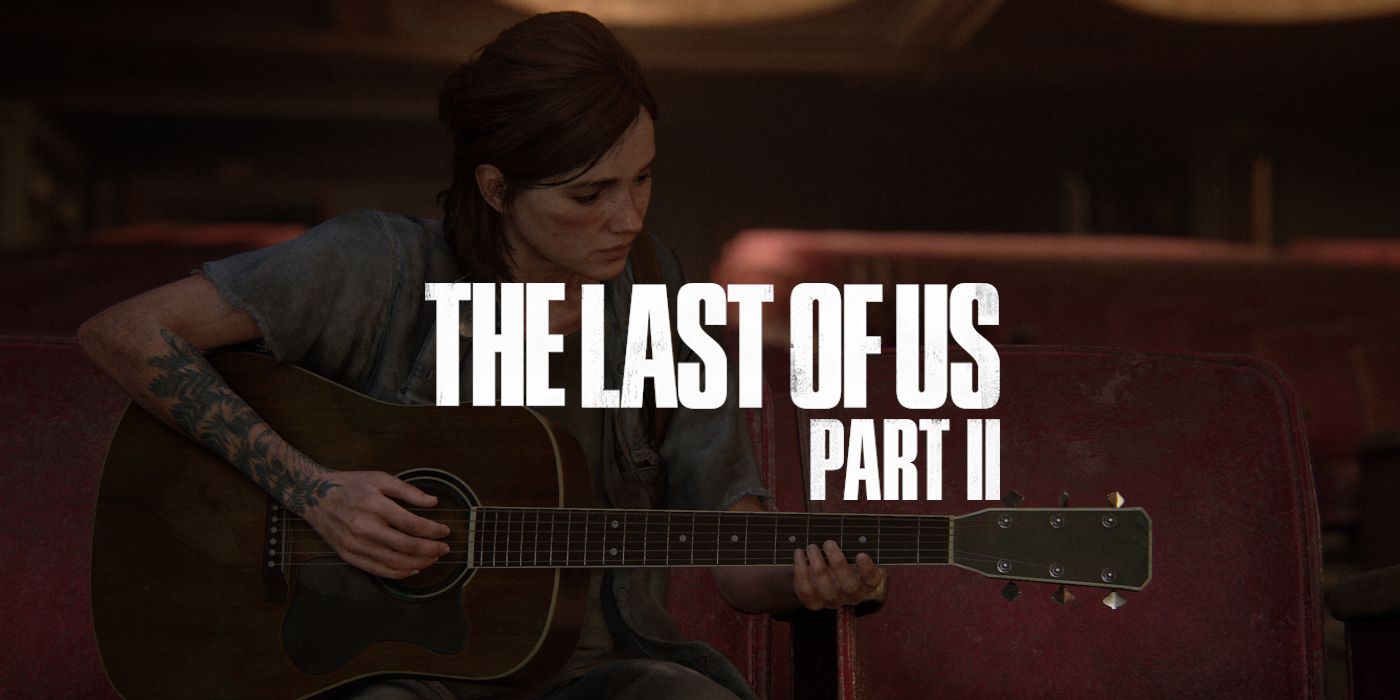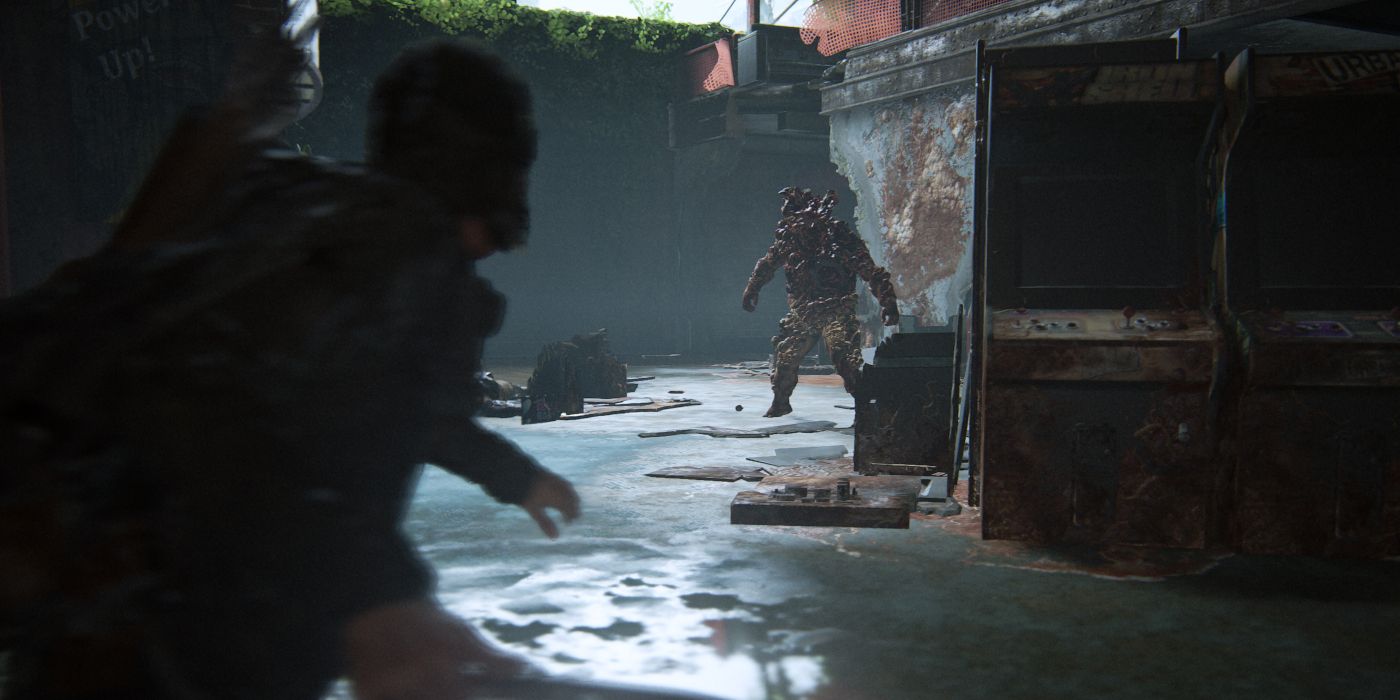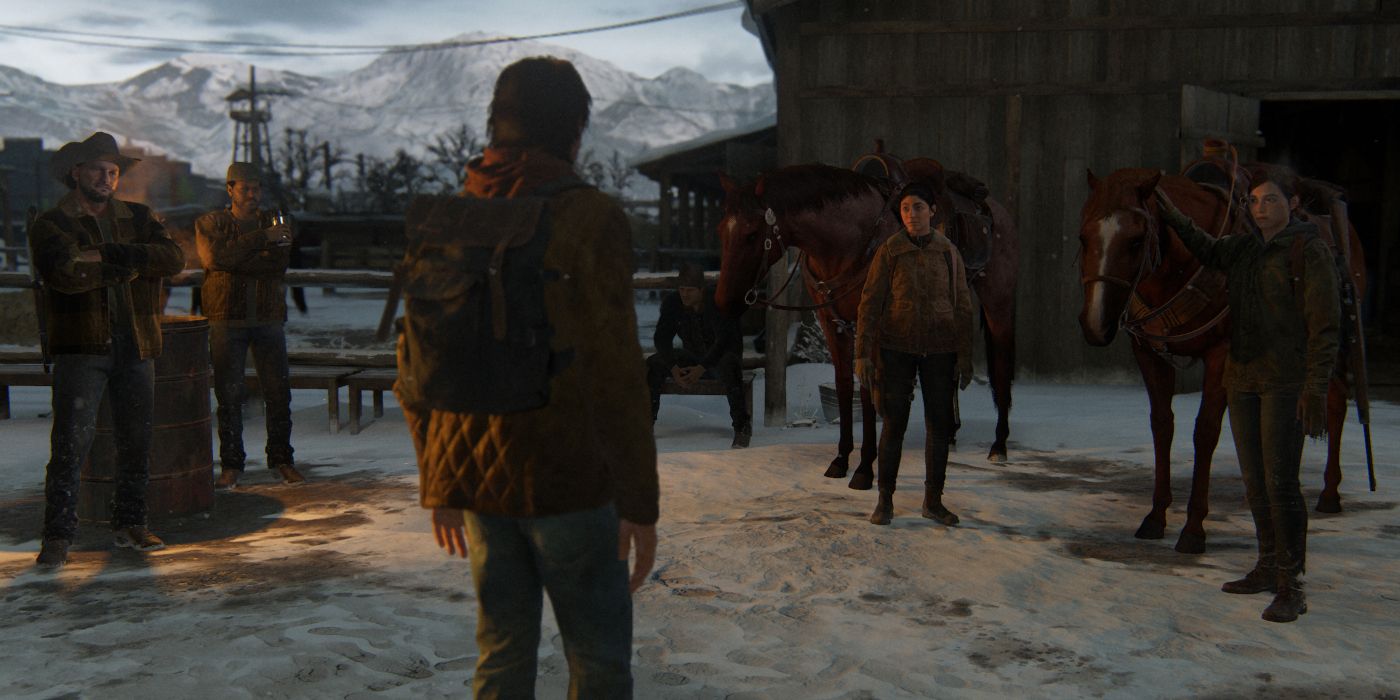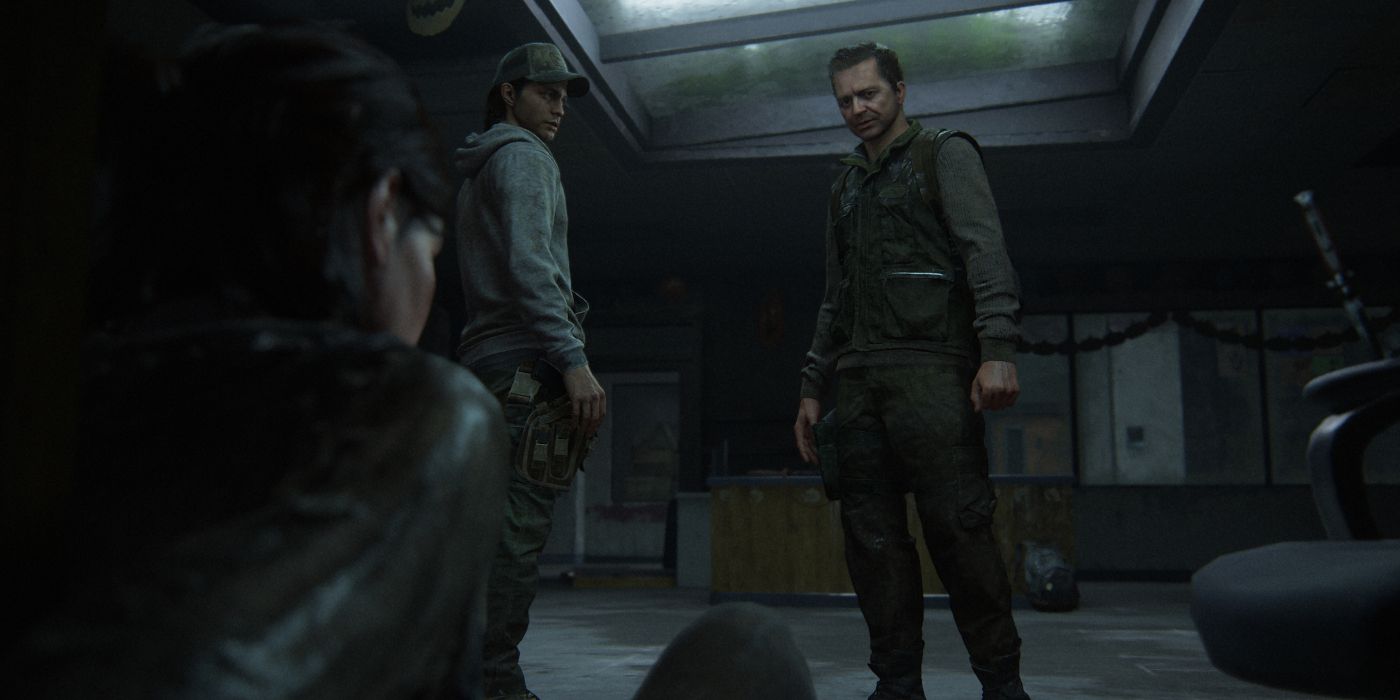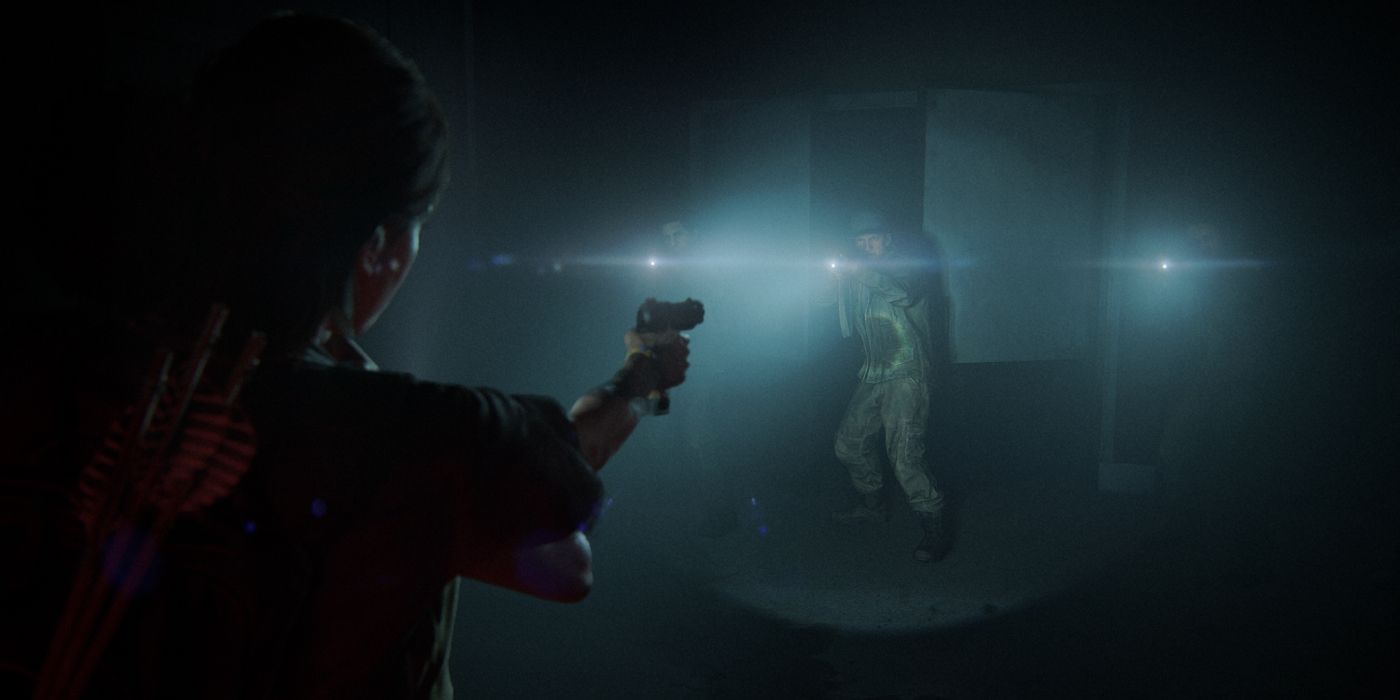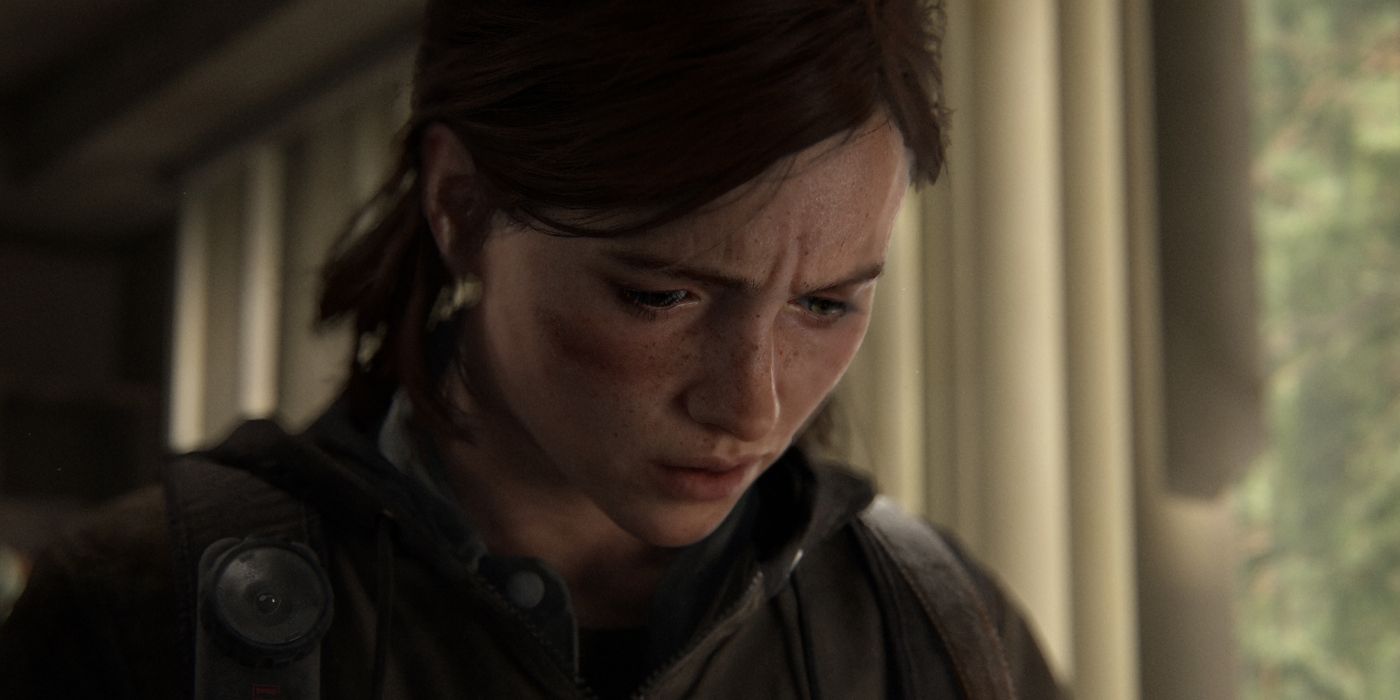The Last of Us Part II stays with you. Deep, deep down, beyond the frantic intensity of its numerous skirmishes, its heart-bursting drama and pathos, its thrilling sequences running characters ragged with terror. Past all it presents in its admittedly superb, keenly refined moment-to-moment gameplay, The Last of Us 2 probes at your own sense of the world and at classical video game storytelling as we understand it. Part of this relates to the omnipresent theme of revenge and loathing; concepts so familiar, relatable, and frequent in games, tropes to designate paths from point A to point B, paths which inevitably lead to Big Bads at their center, premium targets to eventually dispatch and/or forgive. Then: catharsis, satisfaction, release. Then: credits.
There’s another “-sis” concept that is much, much rarer or ever even mentioned in this medium, and that is "anagnorosis." It's a word which speaks to a transformative recognition, an acquisition of the way the world or a conflict really operated or originated, a reckoning with a villain beyond their status as the fuel of a heroic journey. Revenge and its practice fully blinds, gets in the way of this revelation, though for far too many games that process bears little import. A final boss and their minions are usually just areas on a dartboard to be struck, trophies to be collected and tallied, no matter the arrangement.
When Ellie departs the burgeoning enclave community of Jackson County on the road to revenge, you confidently join her. You want to right the shattering wrong as much as she does, are willing to break any rules to do so. She could be any character in any game, but just so happens to be our Ellie, the star companion of the original The Last of Us—and, especially, heroine of its DLC chapter Left Behind, a watershed moment in gaming’s evolution in telling intimately human stories. Ellie was only 14 years old then, though the ravaged world and her lunges for survival accelerated her visible age and resolve.
In The Last of Us Part II, Ellie is older, stronger, cast with darkness, loss, and distrust. Before the intro she’s already seen horrors, joined them, conquered them, fitfully struggling with what remains while still easy to share a bad pun and a dinosaur drawing. Jackson visibly bustles with activity and resources, seemingly affording Ellie and Joel the closest approximation to normalcy, gratefully and finally available to them after a brutal past. Fans of the original will easily put themselves in the shoes of people who once compulsively blocked doors with armoires before being able to indulge a nightmare-filled nap, and Jackson provides a completely different way of life, even occasional leisure. The town schedules armed patrols for sojourns to clear out infected from nearby trails and properties, culling numbers and scouting out the edges of their hard-forged peace. Stores sell food, bars sell drink, snow collects on cabin roofs, adding a painterly postcard glow to the hydroelectric-powered lamplight when viewing the town from afar.
That’s where you’ll now find Abby and her crew, apparent members of the Washington Liberation Front, a new-world militaristic faction. Her close-knit team has ventured to Jackson for an awfully specific reason: to manifest Abby’s will, to slake her anger in an intense and uncompromising act of violence. You briefly inhabit Abby in the first hours of the game, a rough-and-tumble soldier whose impressively muscular physique contrasts with Ellie’s lithe lightweight form. You don’t exactly know why Abby’s near Jackson, but you do get to see her tangle with some infected as you get a quick refresher on the basics of movement and combat.
It’s an early-game opportunity to show off the few new tricks which The Last of Us Part II brings to the fold. For one, engaging any garden-variety Runners has changed, with a quick click of L1 allowing you to dodge their flailing arms for a pugilistic counterattack. Yes, you can actually pummel Runners to death now, snuffing them out without a weapon so long as they’re sufficiently softened up with your fists. That, along with the occasional rope to climb and the ability to go completely prone on the ground—you can even hit the decks to curtail a sprint which, like many other actions, feels mechanically perfect—are the most significant updates from the original game. This means you’re still skulking behind cover, listening through walls for threats, and employing crafty guerilla tactics to strike unseen.
To accentuate this point: the additions to the general game flow as fans understand it are generally minimal. This isn’t a sequel which triples the weapon count or throws buckets of new items at you—bottles and bricks continue to be the sole incidental throwable distraction items, a curious detail in a world literally filled with trash—and utilities like the all-powerful molotov and the craftable pistol silencer make their returns intact. There are a few new interesting toys to play with, of course, but these don’t over-stimulate the basic combat parameters as players remember them.
There are other inclusions which do make the combat more impactful and immediately engrossing this time around. New rare infected—including a greater number of sneaky Stalkers than featured in the original—enter the field, which require alternating approaches and behaviors. Any factions you meet are usually even deadlier, though, with better gear, attack dogs which pursue your scent, and tricky patrol routes high and low. One particular faction type even communicates via a series of absolutely blood-chilling whistles, which seem to correspond to different situational events; soon you’ll learn to intuit their cues of “all clear,” “dead body found,” or “there’s something in the bushes.” Those non-fungal humans tend to be the more imposing threats, and listening to them call out for each other by name or gurgle a sickeningly wet death rattle as you cower in tall grass adds increasingly greater stakes and emotional connection (even outright guilt) to the carnage.
The Last of Us similarly evoked some of these qualities in its approach to violence, from Ellie’s first desperate murder of a hunter to Left Behind’s frantic last act which saw her take on a small army in a rundown mall to protect an injured Joel. And yet, The Last of Us Part II aims well beyond the familiar, with an absolutely anguished and penetrating narrative that punctuates every quarter mile of the winding road to revenge, and beyond. It’s about big-picture people battling small-picture people, meetings which manifest entropy and lack a clear moral equivalency. In the devastated world of the game, there are no right answers, only the ones you love, and revenge looms larger than any sense of truth.
For such heady, heretofore unseen dramatic results, it’s evident that a maelstrom of talent was summoned. There isn’t one actor miscast for any part, not a single segment of music that misfires a scene, not a misguided sound effect (smashing glass windows has never before sounded as satisfying), and the list of memorable lines dense with emotion and multiple meanings is impressive, probably unprecedented in gaming. Seattle is the prominent environment, but musters such stunning visual diversity, from dense forestry to bombed-out banks, highways frozen in crystallized traffic to pitch-black hotel hallways overrun with Clickers. Some of its rundown interiors present warmly peaceful havens to repair and connect with others, a short distance from horrific viscera-strewn apartments where blank-faced sports trophies once witnessed the last tortured moments of their denizens’ lives. The echoes and fossils of the old social world endure, even as their meanings have withered with the isolation required of survival; while Ellie’s girlfriend Dinah paws through a wrecked bookstore bedecked with Pride flags, she sincerely asks, “What’s with all the rainbows?”
Fighting and scavenging alongside an NPC has always been a specific Naughty Dog strength ever since the Uncharted series began, and many of the best conversations in this game occur outside of cutscenes. There are little incidental quips and banters which constantly emerge, in and outside of battle, with each character (both new and old) presented with startling sincerity. Jesse isn’t a traditionally responsible Jacksonian soldier or a sarcastic foul-mouthed observer; he’s both, and neither aspect betrays his devotion to his friends. Dinah and Ellie’s relationship is forged in the violence they were raised in, but that world is but a single color on the canvas of their characters.
Speaking of companions, a section of the options menu allows you tweak their combat effectiveness with unusual precision. Just on the default setting, though, they prove quite useful, frequently taking out enemies and making useful callouts of distant threats, which are then helpfully tagged on your HUD. The listening mode which featured heavily in the first game is certainly here, but it’s not an all-purpose stand-in for the Arkham series' Detective Mode, and stealthy enemies (like those damned Stalkers) mean that it can never be mindlessly relied upon.
As previously reported, The Last of Us Part II features an unheralded selection of different options and game tweaks, all of which help the push towards the sea change of accessible gaming. On a micro and macro level, players can alter every single aspect of the HUD, the rarity and quality of scavenged supplies, or adjust the game to better accommodate individuals with varying degrees of sight ability or motor function. Even though these aspects had already been announced, seeing them in practice shows an investment that may set a new standard, and means that even more gamers can experience the story itself.
Be aware that this review, hopefully similar to others, takes measured pains not to spoil any pertinent turns of the story—and, whether or not you can tell just by reading this, that’s a high-wire pyrotechnic juggling act. Still, similar to director Neil Druckmann’s response to widespread leaks, most any spoilers pose meager threat to the experience as a whole. The Last of Us Part II’s story is superb, even transcendent, on its own, but the profound impact it will have on its players is inherently linked to the medium and method, the time spent enduring each chapter and not the sequence of events as they plainly stand. The transformative journey grants the script real weight and purpose, despite anything to be achieved by the approaching HBO adaptation.
Druckmann has name-checked the book City of Thieves by David Benioff as one inspiration for the game. Consider also Blindness, the novel by Nobel-prize-winning Portuguese author José Saramago, which presents a world devastated by a debilitating epidemic, focusing on a group of citizens as they survive and react to a transformed way of life. The group contends with (and includes) sadistic opportunists and terrified victims, selfless caregivers and distrusting survivors, showcasing the generosity of the human spirit and the bitter scarred armors raised during times of terror and doubt. It essentially presents an atlas of human emotion, amplified by its surrounding drama but never alien or unknown, always unnervingly, embarrassingly recognizable and tangible. That is what Naughty Dog—through delays and drama and leaks, and while naysayers with antiquated perspectives banged pots and pans—have drawn out of The Last of Us Part II. At nearly 30 hours for a careful playthrough, its intensity and relentless narrative will put players through the ringer long before the brutal end, but most anyone will be better for it, tears and all, and very possibly transformed. The greatest game of this console generation? Of that there is absolutely no doubt. It’s also, quite possibly, the greatest video game of all time.
The Last of Us Part II releases exclusively on PlayStation 4 on June 19, 2020. A digital copy was provided to Screen Rant for purposes of review.

